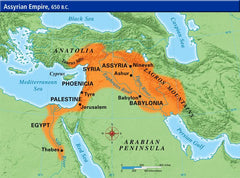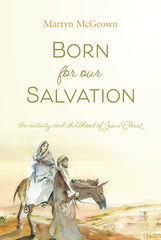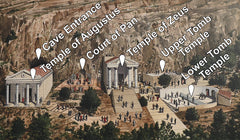Your cart is empty now.

The Marks of the False Church

This article was written by Rev. David J. Engelsma and published in the March 1, 1982 issue of the Standard Bearer.
____________
". . .As for the false Church, she ascribes more power and authority to herself and her ordinances than to the Word of God, and will not submit herself to the yoke of Christ. Neither does she administer the sacraments as appointed by Christ in His Word, but adds to and takes from them, as she thinks proper; she relieth more upon men than upon Christ; and persecutes those, who live holily according to the Word of God, and rebuke her for her errors, covetousness, and idolatry. These two Churches are easily known and distinguished from each other."—Belgic Confession, Article 29
The "problem" of the article of our Confession of Faith quoted above is its absolute distinction between the true church and the false church. It does not speak of purer and less pure churches, of manifestations of Jesus' body that vary in degree of faithfulness and doctrinal purity; but of "two Churches," the true and the false. Applied to the present situation of many, separated churches (denominations), the article might seem to teach that one particular institute is the only true church, while all the others are the false church. Such an interpretation of the article has been given by certain Reformed in the Netherlands; and, now and again, voices have been heard in the Protestant Reformed Churches expressing this position.
It is helpful for understanding the Confession's teaching concerning the false church to have clearly in mind the reference of "true Church-false Church." By the true church is not meant the invisible body of Jesus Christ. If this were the reference, the article would be distinguishing between the one, invisible, true church of Christ and the one, invisible, false church of the devil. Some have tried to escape the difficulty of the article's "true Church-false Church" distinction by resorting to this explanation. That this is not meant is plain from the Confession's admission that the true church has hypocrites mixed in with the good, which cannot be said of the invisible church of Christ. Also, the article makes plain that it refers to a church that has marks which we can see: preaching, sacraments, and discipline—a visible church, therefore.
Neither is this article primarily concerned with our duty to distinguish between believers and unbelievers. It is the case that true members of the church have a certain mark that sooner or later also distinguishes them from hypocrites, namely, a living faith. It is not, however, the point of this article to speak of the distinction between true and false members of the church, i.e., believers and unbelievers ("we speak not here of hypocrites, who are mixed in the Church with the good. . .").
The article refers to the true institute of the church and the false institute of the church. The purpose of this article is the practical one of calling believers to membership in a true congregation and denomination and warning believers against membership in a false congregation and denomination. In order that believers may discern the true and the false, the marks of both are set forth. That this is, in fact, the subject is evident, first, from the mention of "the body and communion of the true Church"; second, from the fact that it is the institute that preaches, administers sacraments, and exercises discipline; and, third, from the fact that it is the institute that always has hypocrites mixed in with the good.
In any discussion of the false church, it is important to note the clear teaching of our Confession that the true church is never pure in the sense that all members are true believers. In the New Testament church, as among the Old Testament congregation, "they are not all Israel, which are of Israel" (Romans 9:6). It is also important to remember that the living members of the true church are not perfectly, or even nearly perfectly, holy. On the contrary, there "remain in them great infirmities." (Cf. also the Heidelberg Catechism, Q. 114) This is important to keep in mind because there always are sects which wickedly break with the true church, as though she were the false church, because they see hypocrites in the church and because they do not find the lives of the members of the church as holy as they would like them to be.
Calvin warns against this: "Thinking there is no church where there is not complete purity and integrity of conduct, they, through hatred of wickedness, withdraw from a genuine church, while they think they are shunning the company of the ungodly" (Institutes, IV, I, 13). No one may despise, or leave, the church because wicked men appear in it; nor may anyone reject a church as false church because the members, including the officebearers, are sinful men. Calvin is correct when he analyzes this separatistic spirit and action as "excessive moroseness (which) is more the result of pride and a false idea of sanctity, than genuine sanctity itself, and true zeal for it. Accordingly, those who are the most forward, and, as it were, leaders in producing revolt from the Church, have, for the most part, no other motive than to display their own superiority by despising all other men" (Institutes, IV, I, 16).
The false church is an assembly that has the name and appearance of the church of Jesus Christ, but which has so apostatized from the word of God, or corrupted it, that Christ is not present in her preaching, sacraments, and discipline as head and Savior, so that his Spirit does not work faith, or give salvation, through these activities of the church. There may be children of God scattered among false churches, but this is in spite of the work of these churches; and these children of God must leave.
Mohammedanism is not a false church, but a pagan religion. The Jehovah's Witnesses, Mormons, and the Unification Church of Moon are not false churches, but cults. But a Protestant church with an orthodox tradition; a smiling preacher with Christ always on his lips; and a congregation that bends over backward to show warmth and friendliness for Jesus' sake (especially to new members) which denies the Godhead of Jesus and atonement of sin in the blood of the cross and which teaches social salvation by human works is a false church.
It is exactly the name and semblance of a Christian church that pose a threat to God's people and that make the warning against the false church necessary.
Holy scripture sounds this warning. Matthew 7:15 tells us to "beware of false prophets, which come to you in sheep's clothing, but inwardly they are ravening wolves." Where there is false prophecy, there is a false church. John 10:1 speaks of a pretender-shepherd of the flock of Christ "that entereth not by the door into the sheepfold, but climbeth up some other way." Commenting on this text, Calvin explains: "For if they who are called shepherds attempt to lead us away from Christ, we ought to flee from them, at the command of Christ, as we would flee from wolves or thieves; and we ought not to form or maintain intercourse with any society but that which is agreed in the pure faith of the Gospel." Before the second coming of Christ, Antichrist will sit as God "in the temple of God, showing himself that he is God" (2 Thess. 2:4). This takes place through the diligent, seemingly Christian labor on his behalf of the "false prophet" (Rev. 13:11ff.; Rev. 19:20).
to be continued...
Coming May 2019!
Prof. Engelsma's volume 2 of The Belgic Confession commentary.

The content of the article above is the sole responsibility of the article author. This article does not necessarily reflect the opinions and beliefs of the Reformed Free Publishing staff or Association, and the article author does not speak for the RFPA.

Donate
Your contributions make it possible for us to reach Christians in more markets and more lands around the world than ever before.
Select Frequency
Enter Amount










